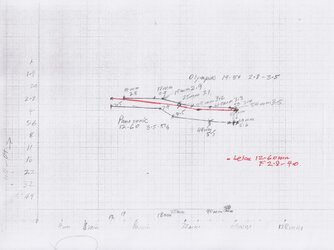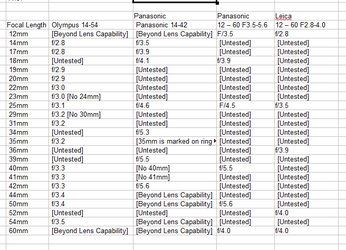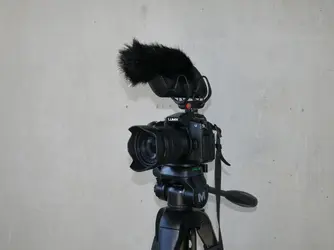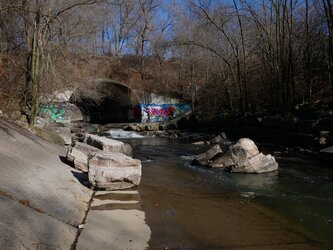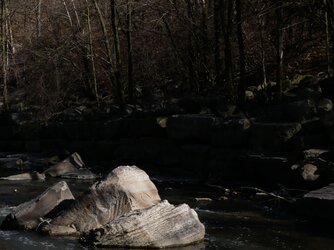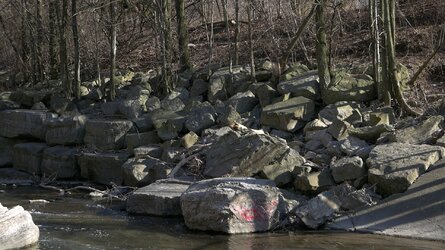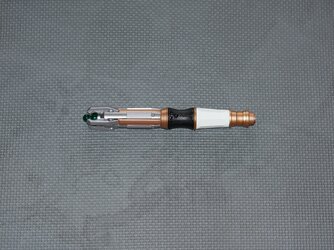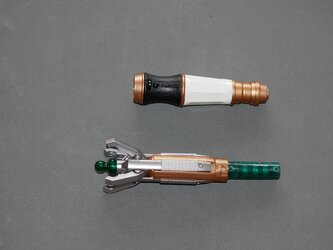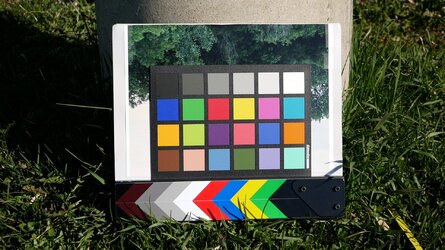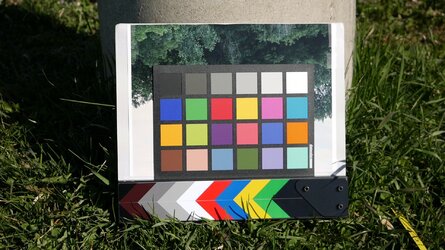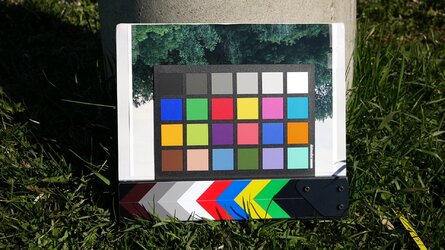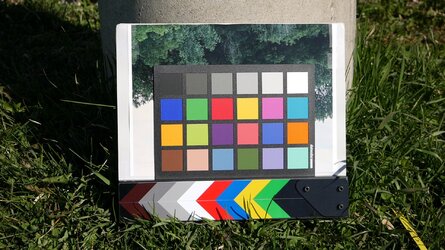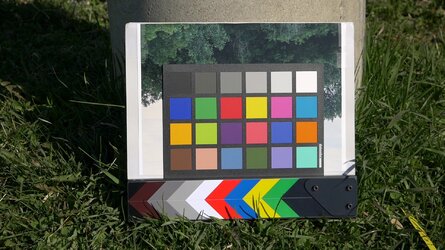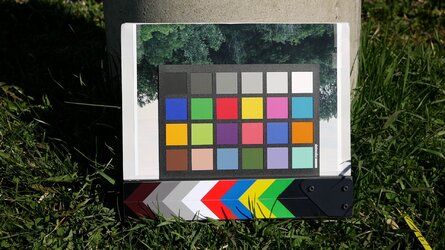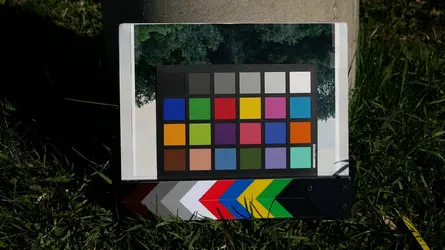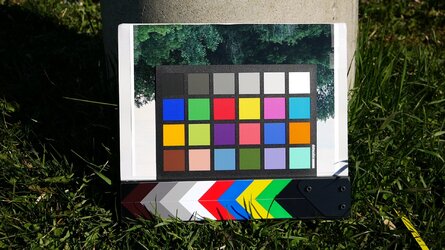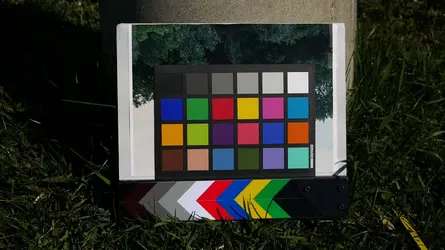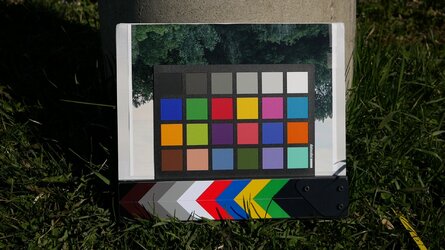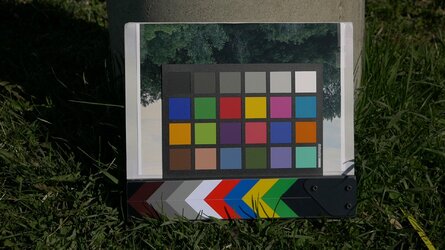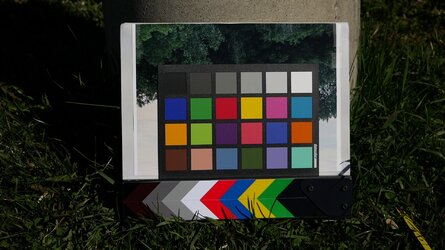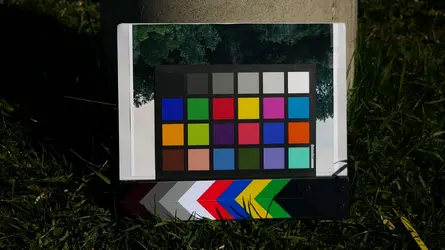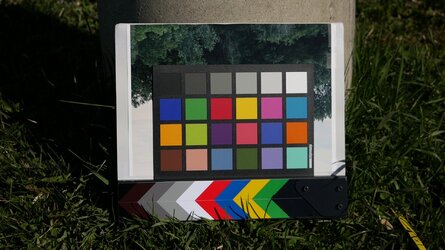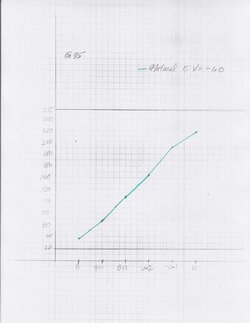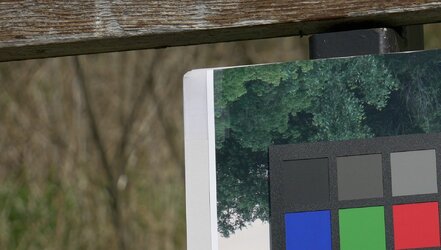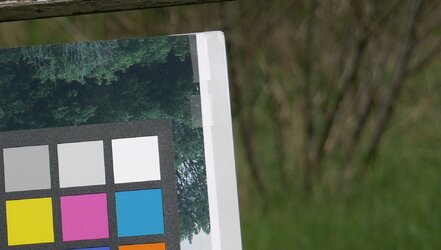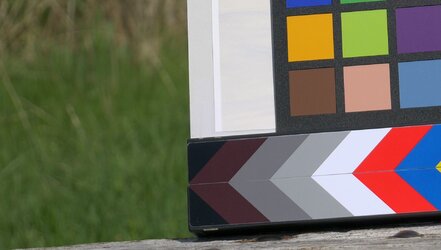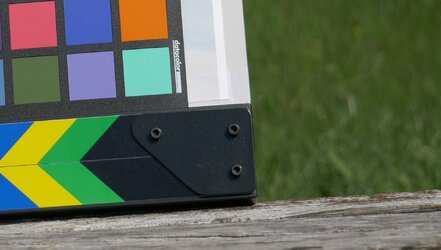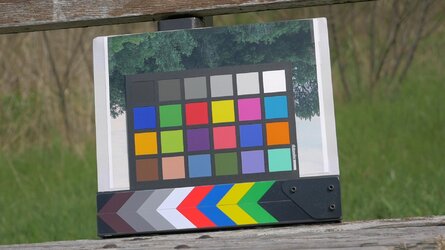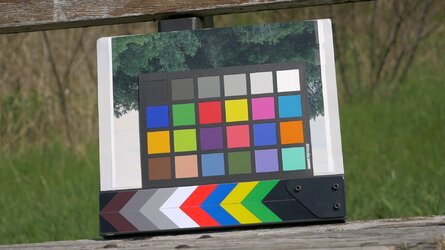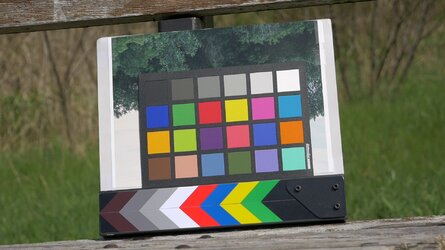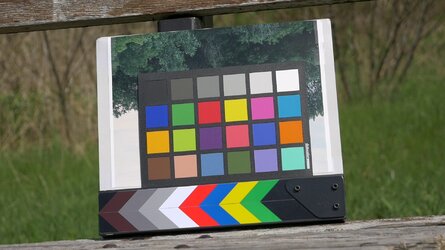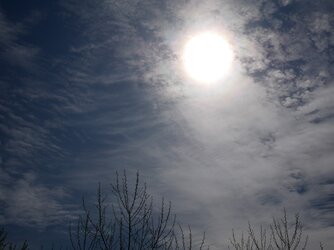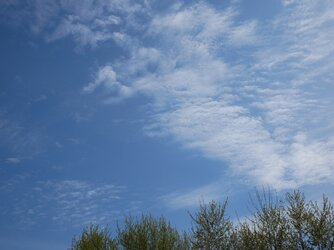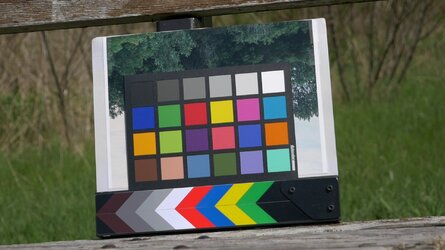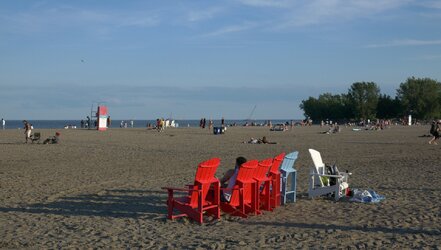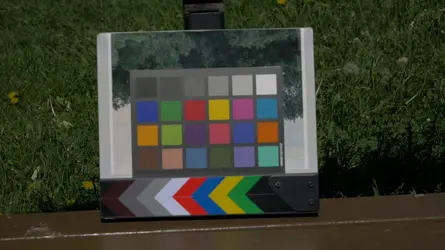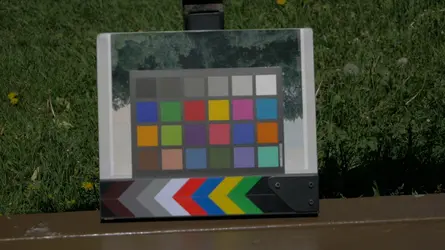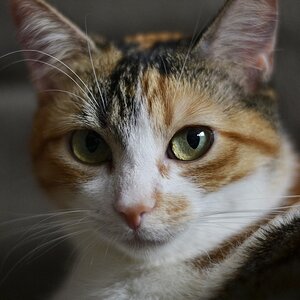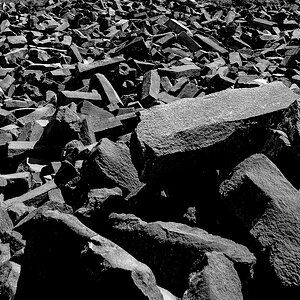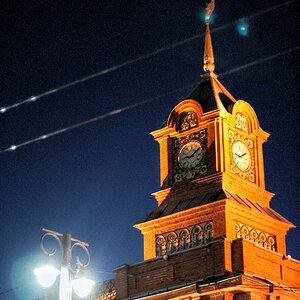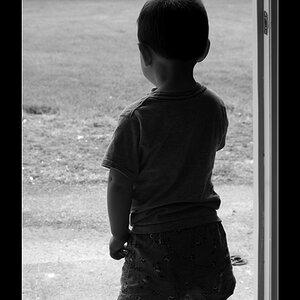VidThreeNorth
No longer a newbie, moving up!
- Joined
- Oct 21, 2016
- Messages
- 1,176
- Reaction score
- 214
- Can others edit my Photos
- Photos NOT OK to edit
Until now, the most I spent on a camera was on my JVC GS-TD1 3D camcorder. It is actually a really nice camcorder, and as far as 1080P goes, the quality is excellent -- even for 2D video, and the sound was wonderful. The main reason I didn't use it for 2D was because it was quite bulky.
Lately, I decided that it was time to invest in UHD (4K) video. I have satisfactory equipment for stills and 1080p video production, but so far, I have held back from investing in a 4K video system with substantial capabilities. The Yi-M1 was never meant to be my "end game" UHD camcorder. It lacks basic capabilities. There is no control for contrast, saturation nor sharpening, and so, it is only good when lighting is close to ideal -- at least 50% overcast, and since it is not weather sealed, I could not even chance using it on a day which might rain. A camera that needs clouds but no rain? That's a good definition of a camera that will sit on the shelf a lot.
Having built a Micro 4:3 system, I decided that the new G95 suited my needs the best, and so I set aside enough money to cover that much and a bit more. But checking the current prices changed my mind.
Vistek was the only store listing a price, and it was $1,499.99 Cdn (saving $300 Cdn). What? I had been watching the US price (B&H) for the same package -- G95 w/12-60mm F3.5-5.6 lens was $997.99 US (saving $200 US). If you use a $.75 US = $1.00 Cdn conversion, that is ~$1330.65 Cdn. I had set aside enough money, but . . . WHAT? I decided to check further.
B&H showed the G85 w/12-60mm F3.5-5.6 lens $697.99 US (~$930.65 Cdn), saving $300. Vistek's price for the same package was $899.99 Cdn (saving $300). That's a little better! Actually, more than just a little better. The price difference between the two models in the US is about $300 US. The difference in Canada is $600 Cdn. Definitely a time to reconsider things.
If I had not bought the Yi-M1, then I might have simply paid the difference and bought the G95, even buying it locally and swallowing the price difference, but I did buy the Yi-M1, and I was keeping it! This changes things. Compared to the G85, the G95 has a better display, it has up to 4x slow motion in 1080p (120 fps), it has a microphone jack, it has V-logL support, it has USB charging, it has a number of added still photo features (like viewing long exposures "live") and it has a 20 MP sensor. The ergonomics in the G95 are also better, but I had not heard terrible things about the G85, so that might not mean anything.
But keeping the Yi-M1 changes things. I had a 20 MP sensor. In fact, from what I knew, I probably had the exact same sensor as the G95. I never did find out if the Yi-M1 has an anti-aliasing filter. It probably does, but for still pictures, I've had good results. In fact, as I have said, it has been particularly good to use for adapted manual lenses.
But there is more to consider. The G85 actually has a couple of advantages over the G95. Not entirely ironically, the G85's 16 MP sensor can be better than the G95's 20 MP sensor. The 4K crop for the G85 (yes, there is) is about 2.2x instead of the G95's 2.5x. The 4K crop in the G85 is often treated by users as "ignorable" whereas the G95's 2.5x crop is obvious and significant. Moreover, the 16 MP sensor has a bit better low light performance. And while the G85 might not have a Log profile, its "CineLikeD" profile can be easier to grade and has been used for "Pro" video work for years. The 2.2x crop factor, making better use of my lenses, stands out.
[2020-03-23 01:09 Above rewritten for clarity. Also:
Confirmation:
According to DP Review, the relative 4K sensor crop for the G85 is 1.1x (compared to the whole M43 sensor). 1.1 x 2.0 (the crop of the whole sensor compared to a 35mm "Full Frame" sensor) = 2.2x, which confirms my estimate of the 4K sensor crop.
Back when it was first published, I read the DP Review coverage of the G95, and I recently went back over it, along with their previous coverage of the G85. It was all interesting. Here is the page in the G95 coverage where they compared its specs with the G85 and Fuji X-T30 and Sony a6400. Notice also that the 22ms "4K shutter rate" of the G95 gives it the best "rolling shutter" performance while the G85's 25ms is just behind the Fuji. And while I do not get the G95's 1080p 120 fps, at least I still get 60 fps. Looking at the comparison, at the list price difference of $200 US, and even at the $300 US price difference at the time I bought my camera, I feel that the G95 is certainly worth the extra cost. But the cost difference locally, at the time I bought leaves me with no regrets. Besides, as I have noted, I still have the G95's sensor in the Yi-M1.
"Panasonic Lumix DC-G95/G90 Review"
Published Aug 13, 2019 by Jeff Keller and Richard Butler for DP Review
"Panasonic Lumix DC-G95/G90 Review"]
And what can I buy with that $600 Cdn? Well, for one thing, I can afford the Shure VP83F LensHopper Shotgun Microphone with Integrated Audio Recorder which costs ~$400 Cdn. ($299.00 US), and that creates an interesting advantage over the G95 alone. I was thinking about buying this recorder/microphone eventually anyway. It gives one an interesting "trick" allowing different record settings between the internal camera recording and the external recording. Well, maybe anyway.
The problem with this "trick" on the G85 and G95 is that these both have worst microphone placement I know of on any interchangeable lens camera. The mics are perfectly placed to record overhead aircraft or sound reflections off ceilings. I guess that having really quiet pre-amps, Panasonic wants to avoid rivalling Sony's reputation with sound. Why else would they sabotage their cameras like this?
So recording with the built in mics is not all that valuable, but it is possible. And there is the possibility of using the VP83F completely separated from the camera, perhaps on a small grip-pod. It can be placed on or near a stage, or near a speaker, while I wander around and record videos or stills. At least I could do that if I had someone to watch that it didn't get stolen, which has been happening lately. If I do this, I already have a Rode VideoMicro that I can use on the camera. So I actually have quite a few options.
I also needed a new "main" tripod. All my tripods had significant deficiencies. I won't go into that in this post, but it was on the forefront of my considerations.
I could also have consider GH4's which are still around new in US (B&H) for $654.95 w/spare battery (no lens) or $694.99 (no lens) w/V-Log activation code, (but no IBIS). This is also a considerable entry level "Pro" grade option, but I wanted to buy locally for service issues, and for now, the G85 would be my only 4K IBIS camera, and that is very important.
Those were my considerations, and the decision was made, and I am now the owner of a "brand new" G85 with kit zoom, and a new tripod, and a Shure VP83F Lenshopper mic/recorder. Now I just need to practice with all this stuff. . . .
Lately, I decided that it was time to invest in UHD (4K) video. I have satisfactory equipment for stills and 1080p video production, but so far, I have held back from investing in a 4K video system with substantial capabilities. The Yi-M1 was never meant to be my "end game" UHD camcorder. It lacks basic capabilities. There is no control for contrast, saturation nor sharpening, and so, it is only good when lighting is close to ideal -- at least 50% overcast, and since it is not weather sealed, I could not even chance using it on a day which might rain. A camera that needs clouds but no rain? That's a good definition of a camera that will sit on the shelf a lot.
Having built a Micro 4:3 system, I decided that the new G95 suited my needs the best, and so I set aside enough money to cover that much and a bit more. But checking the current prices changed my mind.
Vistek was the only store listing a price, and it was $1,499.99 Cdn (saving $300 Cdn). What? I had been watching the US price (B&H) for the same package -- G95 w/12-60mm F3.5-5.6 lens was $997.99 US (saving $200 US). If you use a $.75 US = $1.00 Cdn conversion, that is ~$1330.65 Cdn. I had set aside enough money, but . . . WHAT? I decided to check further.
B&H showed the G85 w/12-60mm F3.5-5.6 lens $697.99 US (~$930.65 Cdn), saving $300. Vistek's price for the same package was $899.99 Cdn (saving $300). That's a little better! Actually, more than just a little better. The price difference between the two models in the US is about $300 US. The difference in Canada is $600 Cdn. Definitely a time to reconsider things.
If I had not bought the Yi-M1, then I might have simply paid the difference and bought the G95, even buying it locally and swallowing the price difference, but I did buy the Yi-M1, and I was keeping it! This changes things. Compared to the G85, the G95 has a better display, it has up to 4x slow motion in 1080p (120 fps), it has a microphone jack, it has V-logL support, it has USB charging, it has a number of added still photo features (like viewing long exposures "live") and it has a 20 MP sensor. The ergonomics in the G95 are also better, but I had not heard terrible things about the G85, so that might not mean anything.
But keeping the Yi-M1 changes things. I had a 20 MP sensor. In fact, from what I knew, I probably had the exact same sensor as the G95. I never did find out if the Yi-M1 has an anti-aliasing filter. It probably does, but for still pictures, I've had good results. In fact, as I have said, it has been particularly good to use for adapted manual lenses.
But there is more to consider. The G85 actually has a couple of advantages over the G95. Not entirely ironically, the G85's 16 MP sensor can be better than the G95's 20 MP sensor. The 4K crop for the G85 (yes, there is) is about 2.2x instead of the G95's 2.5x. The 4K crop in the G85 is often treated by users as "ignorable" whereas the G95's 2.5x crop is obvious and significant. Moreover, the 16 MP sensor has a bit better low light performance. And while the G85 might not have a Log profile, its "CineLikeD" profile can be easier to grade and has been used for "Pro" video work for years. The 2.2x crop factor, making better use of my lenses, stands out.
[2020-03-23 01:09 Above rewritten for clarity. Also:
Confirmation:
According to DP Review, the relative 4K sensor crop for the G85 is 1.1x (compared to the whole M43 sensor). 1.1 x 2.0 (the crop of the whole sensor compared to a 35mm "Full Frame" sensor) = 2.2x, which confirms my estimate of the 4K sensor crop.
Back when it was first published, I read the DP Review coverage of the G95, and I recently went back over it, along with their previous coverage of the G85. It was all interesting. Here is the page in the G95 coverage where they compared its specs with the G85 and Fuji X-T30 and Sony a6400. Notice also that the 22ms "4K shutter rate" of the G95 gives it the best "rolling shutter" performance while the G85's 25ms is just behind the Fuji. And while I do not get the G95's 1080p 120 fps, at least I still get 60 fps. Looking at the comparison, at the list price difference of $200 US, and even at the $300 US price difference at the time I bought my camera, I feel that the G95 is certainly worth the extra cost. But the cost difference locally, at the time I bought leaves me with no regrets. Besides, as I have noted, I still have the G95's sensor in the Yi-M1.
"Panasonic Lumix DC-G95/G90 Review"
Published Aug 13, 2019 by Jeff Keller and Richard Butler for DP Review
"Panasonic Lumix DC-G95/G90 Review"]
And what can I buy with that $600 Cdn? Well, for one thing, I can afford the Shure VP83F LensHopper Shotgun Microphone with Integrated Audio Recorder which costs ~$400 Cdn. ($299.00 US), and that creates an interesting advantage over the G95 alone. I was thinking about buying this recorder/microphone eventually anyway. It gives one an interesting "trick" allowing different record settings between the internal camera recording and the external recording. Well, maybe anyway.
The problem with this "trick" on the G85 and G95 is that these both have worst microphone placement I know of on any interchangeable lens camera. The mics are perfectly placed to record overhead aircraft or sound reflections off ceilings. I guess that having really quiet pre-amps, Panasonic wants to avoid rivalling Sony's reputation with sound. Why else would they sabotage their cameras like this?
So recording with the built in mics is not all that valuable, but it is possible. And there is the possibility of using the VP83F completely separated from the camera, perhaps on a small grip-pod. It can be placed on or near a stage, or near a speaker, while I wander around and record videos or stills. At least I could do that if I had someone to watch that it didn't get stolen, which has been happening lately. If I do this, I already have a Rode VideoMicro that I can use on the camera. So I actually have quite a few options.
I also needed a new "main" tripod. All my tripods had significant deficiencies. I won't go into that in this post, but it was on the forefront of my considerations.
I could also have consider GH4's which are still around new in US (B&H) for $654.95 w/spare battery (no lens) or $694.99 (no lens) w/V-Log activation code, (but no IBIS). This is also a considerable entry level "Pro" grade option, but I wanted to buy locally for service issues, and for now, the G85 would be my only 4K IBIS camera, and that is very important.
Those were my considerations, and the decision was made, and I am now the owner of a "brand new" G85 with kit zoom, and a new tripod, and a Shure VP83F Lenshopper mic/recorder. Now I just need to practice with all this stuff. . . .
Last edited:


